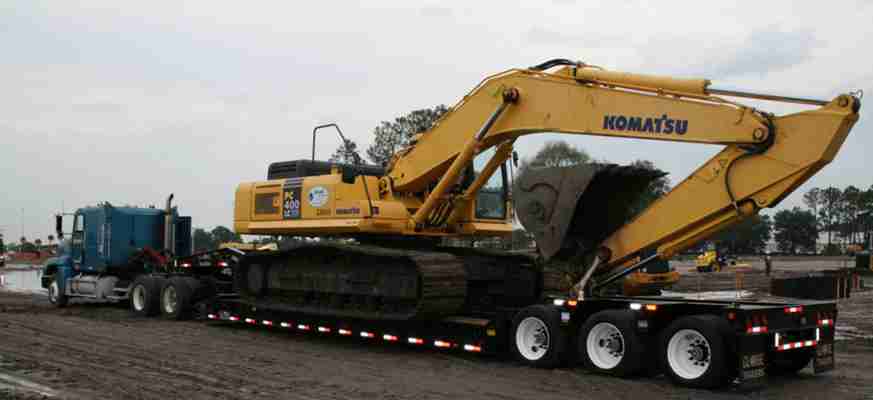Designate Duties

Make sure everyone involved in loading the machine has been trained properly. Not only do they need to know what they're doing, but also how their actions might cause damage or injury if carried out improperly!
Make sure the trailer you are loading onto is on flat, level ground
A tilted trailer can cause rollover problems that are easily avoidable.
Be aware of all obstacles in your area
Adjust your loading strategy to avoid hitting any nearby objects and move everything to a safe distance if possible.
Check that your truck can handle the load and is parked and secure
Use the parking breaks or wheel chocks if necessary to prevent unwanted movement.
Check your trailer deck
Make sure it is as clean as possible and ready to accept the load.
Line up and approach the trailer, straight on
Use a spotter if your view is obstructed. Slowly drive your machine onto the trailer. Make sure the machine gently lowers itself down on the trailer to avoid damaging the machine or trailer. Once you have climbed onto the trailer, ensure all buckets and attachments are tucked towards the floor of the trailer.
Secure Your Heavy Equipment for Transport
All equipment attachments, work tools, and other accessory equipment must be lowered and secured before transportation. Retract booms and buckets and secure them in place. Secure equipment components (lock all doors, covers, tailgates, and articulation points). Also, make sure the machine transmission is immobilized and brakes are locked. For additional protection to your equipment, you may choose to cover it with a tarp or wrap it with shrink wrap. This protects the equipment from dirt, debris, and moisture on the roadways. For equipment with a smokestack, be sure to cover it so debris cannot enter. Use ample & appropriate securing devices (chains, binders, straps, & anchors). Choose appropriate attachment points on the machine and trailer.
Once the load is secured, check everything a second time. It can be helpful to have a safety check system in place where multiple people check the load, instead of relying on a single person.
Verify Driver Visibility
To make sure the driver has a clear view of what’s going on around them. The placement of equipment should also allow free movement of the driver and should not obstruct them from exiting the vehicle or accessing any necessary vehicle components or accessories. This ensures the driver can safely transport the machinery and keeps your company compliant with DOT regulations.
Check out a good securement video from Dirt Perfect. It covers tips. tricks, do's & don'ts for equipment greater than 10,001 lbs.
Useful links